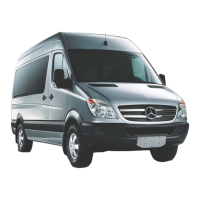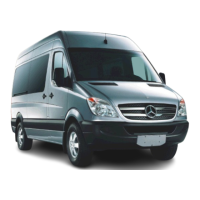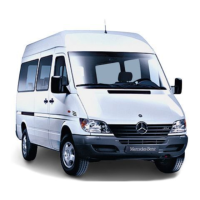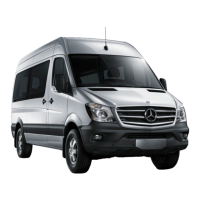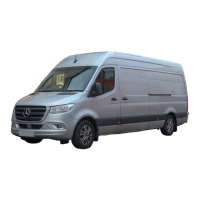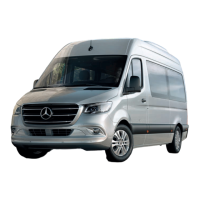R
Ho
t vehicle parts do not come into
contact with ammable materials.
R
The exhaust gas can ow out of the
stationary heater exhaust pipe unhin-
dered.
R
The exhaust gas does not come into
contact with ammable materials.
*
NOTE Damag
e to the auxiliary heating
If the auxiliary heating is not used for a long
time, it ma
y be damaged.
#
Switch on the auxiliary heating at least
once a month for about ten minutes.
*
NOTE Damag
e to the auxiliary heating due
to overheating
If the o
w of hot air is blocked, the auxiliary
heating may overheat and switch o.
#
Do not block the o
w of hot air.
%
Vehicles with a modied fuel displa
y: if an
externally operated consumer is connected via
the cable for the auxiliary heating, this is not
taken into consideration on the "remaining
range" display of the on-board computer.
In this case, observe the fuel display. The fuel
display reects the actual ll level.
If you are transporting hazardous materials, com-
pl
y with the relevant safety regulations. Place
objects a sucient distance from the auxiliary
heating outlet opening.
Auxiliary heating works independently of the
engine and complements the climate control sys-
tem in the vehicle. Auxiliary heating heats the air
inside the vehicle to the set temperature.
Hot-water auxiliary heater
▌F
unction of the hot-water auxiliary heater
The hot-water auxiliary heater complements your
vehicle's climate control system, and has a heater
booster, auxiliary heating and auxiliary ventilation
function. In addition, the auxiliary heating system
heats the engine coolant to protect the engine and
save fuel during the warming-up phase. The auxili-
ary heating heats the air inside the vehicle to the
set temperature. It is not dependent on the heat
output of the running engine. The auxiliary heating
is operated directly using the vehicle's fuel. For
this reason, the fuel tank must have been lled
above the reserve fuel level so that the auxiliary
heating can work. The auxiliary heating automati-
call
y adapts its operating mode to the outside tem-
perature and weather. It is therefore possible that
the auxiliary heating may switch from ventilation to
heating mode or from heating to ventilation mode.
When the engine is running, auxiliary ventilation is
not active. Auxiliary heating automatically switches
itself o aer a maximum of 50 minutes. You can-
not use the "auxiliary ventilation" operating mode
to cool the air inside the vehicle to below the out-
side temperature. Auxiliary heating helps to heat
up the vehicle while the engine is running and at
low outside temperatures.
Operating the hot-water auxiliary heater draws
power from the vehicle battery. Therefore, drive a
reasonably long distance aer heating or ventilat-
ing the vehicle twice in succession at most.
Auxiliary heating can be activated only at tempera-
tures below 40 °F (4.5 °C).
▌Switching the hot-water auxiliary heater on/o
with the button
Requirements:
R
The fuel tank is lled above the reserve level.
#
To switch the auxiliary heating on and o:
pr
ess the & button.
#
To activate the specied t
emperature: switch
on the vehicle and press the & button.
#
To deactivate the specied temperature: press
the & button.
#
To set the specied t
emperature: set the tem-
perature using the w button and press
the & button.
Colors of the indicator lamp:
R
Blue: s
tationary ventilation has been switched
on.
R
Red: the stationary heater has been switched
on.
R
Yellow: a departure time has been preselected.
The stationary heater or stationary ventilation
switches o aer a maximum of 50 minutes.
#
To activate the heater booster mode: switc
h on
the vehicle and press the & button.
#
To switch o heat
er booster mode: press
the & button.
106
Climate control
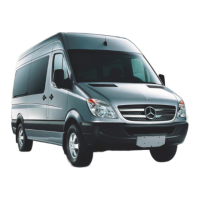
